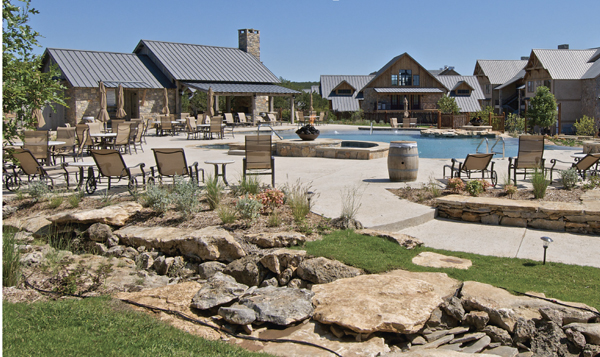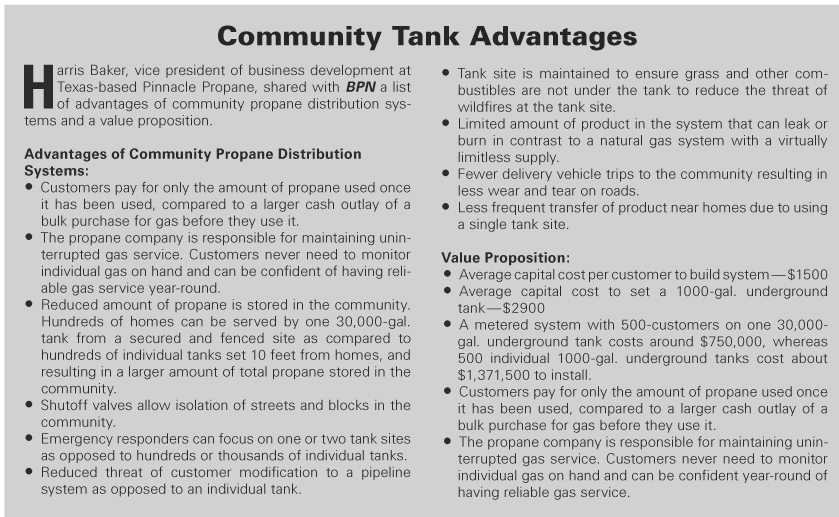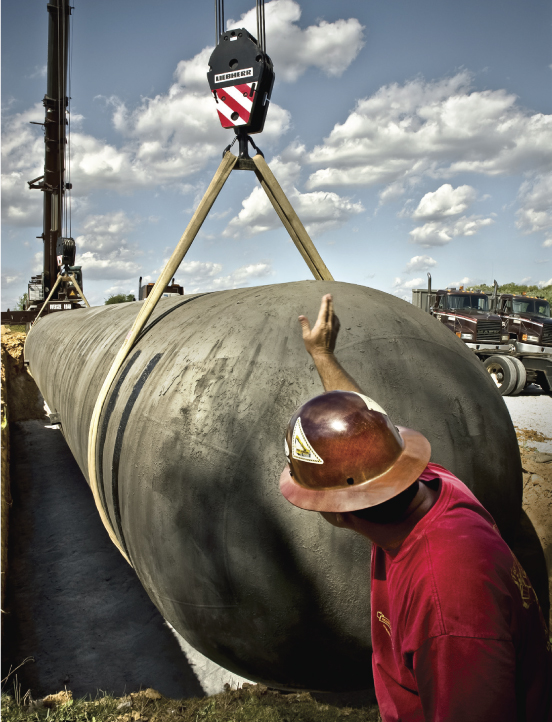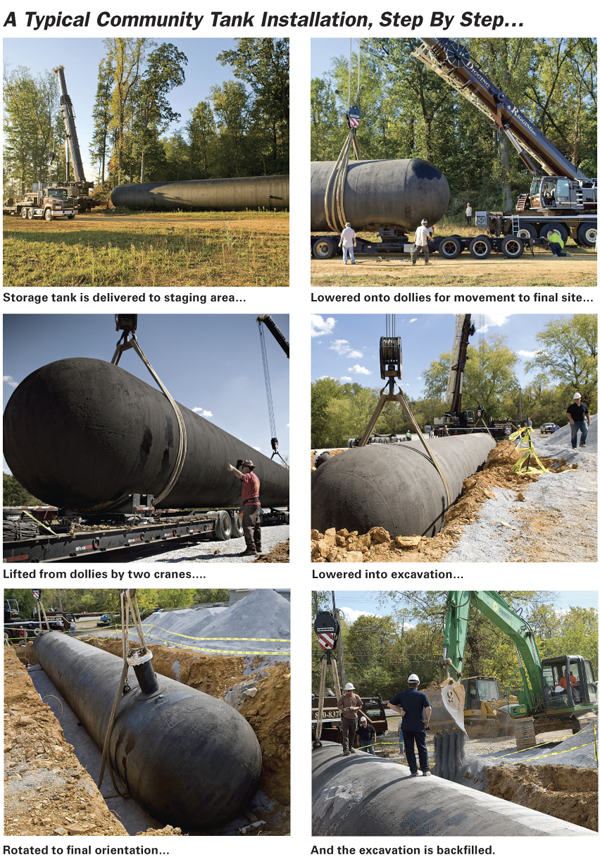Combined Energy of Monticello, N.Y. has been serving residential customers throughout the Tri-State region of New York’s Catskill Mountains and lower Hudson Valley, eastern Pennsylvania, and northern New Jersey since 1968. One of the challenges the company has encountered is that, for many of its customers, the home the propane retailer serves is their second home. Some of these are winterized, whereas others have the heat left on throughout the winter season. This makes it difficult for the propane marketer to track the product consumed in many of these second residences, allowing a stronger possibility of home freeze-ups.

According to Combined Energy Services’ general manager, Mike Taylor, the best solution for many is to install a community tank that serves multiple homes. Instead of each having its own propane tank, a community of homes share a very large propane tank that pipes fuel into each through an underground piping system. “Each home is monitored with a meter and customers are billed for usage from one large 18,000-gallon tank,” Taylor told BPN. “Cargas created a system for the company that has a bar-code reader. When the meter reader goes out, a thermal print paper invoice can be created or an email invoice sent. The information can also simultaneously be sent to the propane company office and the invoice can be posted immediately.”
Taylor explained there are many regulations as well as paperwork to stay on top of. “We must also be registered with the 811 system, which tracks underground piping.” In addition, tracking of inventory and how much went to each home is required by the Department of Transportation (DOT), which has jurisdiction over community propane systems.

The community tank system also provides customers with a distribution and billing process much like they are accustomed to, according to Jesse Marcus, the Propane Education & Research Council’s (PERC) director of residential and commercial business development. With this system, “customers don’t have to install a tank in their yard or spend time scheduling deliveries,” he said. “It is very similar to living in a home with natural gas piped in.”

Harris Baker, vice president of business development with Irving, Texas-based Pinnacle Propane, a company operating more than 50 community systems, notes that gas distribution systems are scalable in both the number of units or lots served as well as the size of the homes, schools, and other non-residential uses such as offices, retail and commercial centers, and entire malls. “Our systems serve small boutique communities, suburban starter homes, condominiums, homes by national and regional production builders, multimillion-dollar estate homes, thousands of homes in master-planned communities, schools, offices, resorts, and entire cities, including Page and Payson, Ariz.,” Baker said. “The developers, land planners, engineers, and builders we work with appreciate the value that our community gas systems bring to their development by increasing marketing, absorption, as well as the enhanced amenity and lifestyle offerings with this conventional gas service in areas where natural gas may not be offered.”
Community tank systems are often also referred to as jurisdictional systems. An LP-gas system is jurisdictional where one of the following conditions exists:
- Ten or more customers are supplied from a single tank or multiple tanks that are manifolded together. The location in this scenario does not matter.
- More than one customer is supplied from a single tank or multiple tanks that are manifolded together, and a portion of the system is located in a public place.
DOT also has oversight for community tank systems where the systems are jurisdictional. In this case, NFPA 58 supersedes DOT pipeline regulations where they both cover the same subject.
Underground piping is typically set in a standard 18-in.-deep trench with sand surrounding the plastic pipe. A regulator placed at the top of the riser at the house connects to the inside piping. When installing the regulator, a propane professional will take into account the distance requirements from possible ignition sources when installing each unit.

The community propane systems are a cost-saving alternative for developers who are initially challenged by the high cost of bringing in natural gas. And, this could be a boon for propane marketers; many of the new residents who may never have lived in a propane-fueled home will get to experience the benefits of the American-made fuel. Residents will be introduced to the advantage of tankless water heaters that provide hot water instantaneously, the comfortable heat of gas furnaces, a gas dryer that dries faster and more efficiently than an electric model, and the even heating of a gas cooktop. As more of the U.S. is experiencing electrical power outages, with the addition of a backup generator homeowners will also be confident of uninterrupted power. Also of note, such systems are especially popular in Florida where many vacation homes that sit empty can quickly develop mold if a power outage is not resolved within a few days.
An example of an area that is ideal for a community propane tank is profiled on PERC’s www.buildwithpropane.com website. In a video, Rockwell Custom’s general manager, Tom Burleigh, discusses building condominiums at Creekside at Llanerch in Drexel Hill, Pa., which was recently voted the best suburb for young couples in the Philadelphia area. Burleigh explains that piping in natural gas would have cost an extra $150,000, so there was substantial savings by installing a community propane system. In addition, the community propane tank has also allowed residents to reduce their carbon footprint while enjoying all the benefits of propane. —Pat Thornton

